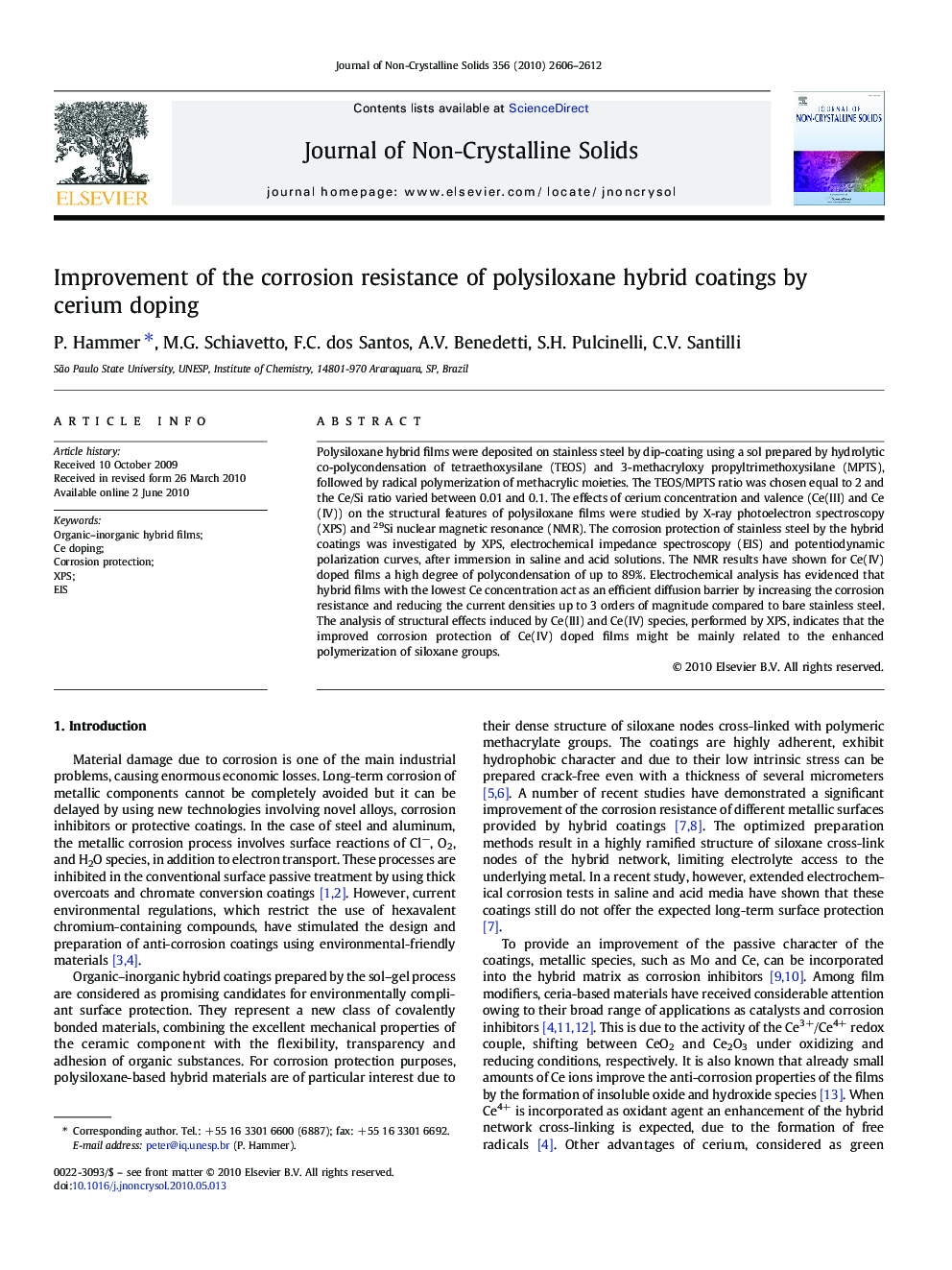| Article ID | Journal | Published Year | Pages | File Type |
|---|---|---|---|---|
| 1482799 | Journal of Non-Crystalline Solids | 2010 | 7 Pages |
Polysiloxane hybrid films were deposited on stainless steel by dip-coating using a sol prepared by hydrolytic co-polycondensation of tetraethoxysilane (TEOS) and 3-methacryloxy propyltrimethoxysilane (MPTS), followed by radical polymerization of methacrylic moieties. The TEOS/MPTS ratio was chosen equal to 2 and the Ce/Si ratio varied between 0.01 and 0.1. The effects of cerium concentration and valence (Ce(III) and Ce(IV)) on the structural features of polysiloxane films were studied by X-ray photoelectron spectroscopy (XPS) and 29Si nuclear magnetic resonance (NMR). The corrosion protection of stainless steel by the hybrid coatings was investigated by XPS, electrochemical impedance spectroscopy (EIS) and potentiodynamic polarization curves, after immersion in saline and acid solutions. The NMR results have shown for Ce(IV) doped films a high degree of polycondensation of up to 89%. Electrochemical analysis has evidenced that hybrid films with the lowest Ce concentration act as an efficient diffusion barrier by increasing the corrosion resistance and reducing the current densities up to 3 orders of magnitude compared to bare stainless steel. The analysis of structural effects induced by Ce(III) and Ce(IV) species, performed by XPS, indicates that the improved corrosion protection of Ce(IV) doped films might be mainly related to the enhanced polymerization of siloxane groups.
